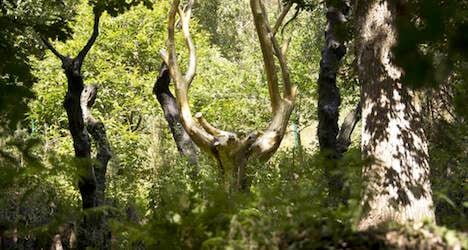The federal environment office said the risk of fire was high in certain areas of the canton of Valais and the lower Engadine region of the canton of Graubünden.
The office issued level four or five alerts for several regions in Valais, including the area around the canton’s capital, Sion, and the nearby city of Sierre and Loèches.
Dangerously dry conditions were also reported in the Fully-Chamson, Riddes-Saxon, Martigny-Trient, and Visp-Brig-Aletsch areas.
Concerns have also been raised in the Bernese Oberland and parts of the Bernese Jura.
Temperatures have risen above 30 degrees and are expected to jump to as high as 37 degrees in hot spots such as Valais on Saturday.
Fire fighters in Ticino were dispatched by helicopter on Monday night to quell a blaze that broke out following lightning in the Onsernone Valley.
Cantonal authorities have yet to apply restrictions on open fires, although some regions may face bans on fireworks, typically used to celebrate Switzerland’s national holiday on August 1st.
Meanwhile, the hot weather was punctuated by thunderstorms which brought heavy rain to western Switzerland late Tuesday night and early Wednesday morning.
The Paleo music festival, near Nyon in the canton of Vaud, was forced to cancel a late-night concert because of a deluge.
Flash flooding occurred in many communities in the canton of Geneva after 50 millimetres of rain fell in an hour, the Tribune de Genève reported.
The rain was accompanied by winds ranging from 65 to 77 kilometres an hour in the Lake Geneva region, 20 Minutes reported.
More stormy weather is expected in some regions on Wednesday before dry, warmer air moves across the country and temperatures mount again.




 Please whitelist us to continue reading.
Please whitelist us to continue reading.
Member comments